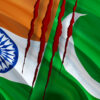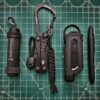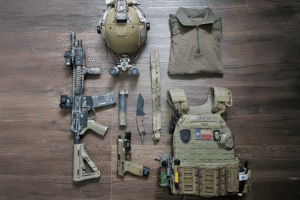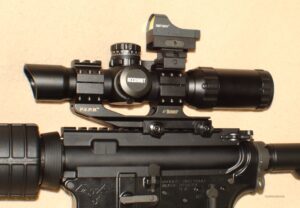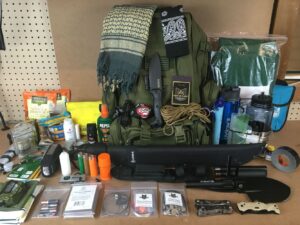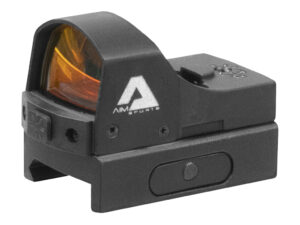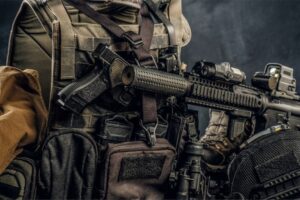
Pakistan’s diverse terrain and security needs demand reliable tactical gear for police, military, airsoft players, and outdoor adventurers alike. From urban patrols to rural operations, quality equipment can be the difference between success and failure. This guide highlights ten essential tactical items readily available in Pakistan – including products like the RAAD Tactical “Batur EDPC 2.0” plate carrier – explaining why each is useful and what buyers should consider. We’ve included local context (e.g. climate, availability, price range) along with expert insights and reputable sources.
1. Tactical Plate Carriers (Body Armor Vests) – RAAD Batur EDPC 2.0
A plate carrier or tactical vest is arguably the centerpiece of any operator’s kit. These vests hold ballistic plates and gear, protecting the torso while distributing weight. For Pakistani law enforcement and enthusiasts, a modular design is key. One standout is RAAD Tactical’s Batur EDPC 2.0 Fully Loaded carrier. This Pakistan-designed vest features magazine placards for quick reloads and multiple pouches for radio, medical gear, and tools. Uniquely, the Batur EDPC 2.0 comes with an integrated backpack that houses a water bladder – allowing hands-free hydration during long missions. In practice, this means officers or hikers can stay hydrated in Sindh’s heat without sacrificing mobility.
- High Protection: Carries rifle or pistol ballistic plates to stop bullets and shrapnel (note: ballistic plates require legal licensing in Pakistan).
- Modularity: MOLLE webbing and pouches for magazines, grenades, radios, etc. The Batur EDPC 2.0 even includes extra lower pouches.
- Hydration Ready: Built-in backpack with a water bladder lets you carry several liters of water comfortably.
- Adjustable Fit: Straps and cummerbund fit various body sizes (essential for teams of differing statures).
Buyers’ Tip (Pakistan): Ensure any carrier has adjustability and padding, as thick body armor can fatigue you quickly. Also check if the seller provides genuine ballistic plates or just the vest shells – plates can be very expensive in PKR. RAAD’s Batur EDPC 2.0 (around ₨40,000) is locally made and comes with Pakistani warranty, making it a good value choice. International brands (5.11, Viking Tactics, TYR) may be available through niche importers but at higher cost.
2. Tactical Boots – Rugged, Comfortable Combat Footwear
A solid pair of tactical boots is essential. Law enforcement officers, soldiers, and outdoor enthusiasts need boots with ankle support, durability, and slip-resistant soles. In Pakistan’s varied climate – from the humid plains of Punjab to rocky northern trails – breathable, waterproof boots with good traction are ideal. Lightweight, shock-absorbing midsoles and reinforced shanks keep feet supported during long shifts or hikes. For example, police-style duty boots often have slip-resistant outsoles and cushioned insoles to stay agile and comfortable during foot patrols.
Key features to look for:
- Material and Durability: Leather or Cordura uppers for abrasion resistance. Many boots use nylon/canvas combos to cut weight.
- Sole and Traction: Look for puncture-resistant soles and deep lugs for grip on mud, rocks, and urban debris.
- Comfort: Cushioned insoles and ventilated linings prevent blisters. Even heat-resistant or insulated linings can help in extremes.
- Ankle Support: High-cut boots protect against twisted ankles on uneven terrain.
“No matter the mission, tactical boots provide the protection, stability, and all-day comfort you need to perform at your best”.
Local Options: Pakistani stores (TacticalGears.pk, FM Tactical, or Army surplus shops) stock brands like Magnum, Bates, or generic “police boots” (often labeled “High Quality Police & Military Shoes” at ₨5,000–7,000). International names (5.11, Danner, Altama) can be found but cost more. Always try boots on in-person, if possible, since sizing can vary. And be mindful: genuine tactical boots often cost a few thousand PKR more than hiking boots, but are built for harsher use.
3. Tactical Backpack / Hydration Rucksack
A tactical backpack (or “assault pack”) lets you carry extra gear, medical supplies, and hydration hands-free. Unlike a regular backpack, tactical packs often come with MOLLE attachment points and specialized compartments. For example, many military-grade packs include a slot for a water bladder and a hole for the drinking tube – perfect for Pakistan’s hot climate. As CamelBak notes, tactical packs allow easy carrying of gloves, clothing, radios, flashlights, and other kit while on the move. They also often have reinforced sections for gear like communications radios, which can have antenna pass-throughs built-in.
Important features:
- Hydration Compatibility: A compartment for a 1–3 L bladder (CamelBak-style) plus routing for the drinking hose. Staying hydrated is crucial in Pakistan’s heat.
- MOLLE Webbing: External straps for attaching extra pouches, canteens, or holsters. This lets you customize the pack for a particular mission.
- Storage Capacity: Common sizes range 20–45 liters. A 20–30L pack is enough for one-day ops; bigger 50–60L “assault” packs can carry sleep gear for overnight trips.
- Comfort & Durability: Padded shoulder straps, waist belt, and back panels help carry loads over long distances. Rugged fabrics (e.g. 600D nylon) resist tears and rain.
Use Case: Airsoft players and hikers in Pakistan benefit greatly from hydration packs. Even law enforcement on patrols (FIA, coast guards, and mountain police) use tactical rucksacks. For example, RAAD’s gear includes tactical bags (referenced on their site) though CamelBak is the global leader. CamelBak itself emphasizes that tactical packs are “engineered to work as hard as you do”.
“Tactical backpacks are a key essential for military, law enforcement, or first responders. Most feature hydration-bladder compatibility and external ports for essential equipment including radio antennae and earphones”.
Buying in Pakistan: Look for well-reviewed models on sites like Amazon Pakistan or local stores. Even improvised gear (outdoor brands) can work if MOLLE style is present. Check that the fabric is not too thin – cheap packs may fail under heavy load.
4. Duty Belt & Holster System
No loadout is complete without a tactical duty belt. This wide belt (usually 2–3″ heavy nylon or leather) carries your primary gear: sidearm, magazine pouches, handcuff case, baton, flashlight holster, etc. Pakistani police (Punjab, KPK, etc.) and security forces use reinforced belts to distribute weight. According to law enforcement suppliers, “a police duty belt is designed to hold a variety of duty equipment, such as handcuffs, firearms, and magazines”. The wrong belt setup can cause back strain, so quality belts (with inner and outer belts or padded designs) are worth the investment.
Features to consider:
- Holster Compatibility: A sturdy holster for your handgun (airsoft players can use real gun holsters with dummy guns). The holster should lock the weapon securely but allow a smooth draw.
- Magazine Pouches: Rigid mag holders for fast reloads. Many belts have quick-release buckles for adjusting fit on the fly.
- Build Quality: Stiff backing (sometimes two-layer: an inner comfort belt and an outer duty belt) prevents sagging. Look for abrasion-resistant nylon or even ballistic nylon belts.
- Comfort: Padding or breathable designs reduce chafing. If you wear the belt for hours, this matters.
Tip: Hero’s Pride and Galls (US suppliers) note that a duty belt must “support the weight of your holster and duty gear while you’re on the move” without causing injury. In Pakistan, local suppliers and RAAD Tactical offer simple nylon belts (RAAD lists a “Belt” product) that integrate with their vests. If buying locally, ask for belts used by military/navy or police – these are usually tested to carry all required gear.
5. Tactical Flashlight
A tactical flashlight is far more than a camping lamp. A good tactical light (often with a CREE LED emitter) can deliver 600–1000+ lumens, enough to illuminate dark alleys or dense brush. As one expert explains, “a quality tactical flashlight makes you and those around you safer… with a strong beam to illuminate your environment and any potential lurkers”. In practical terms, this means a Pakistani officer can spot threats in dim neighborhoods or a ranger in the Margalla Hills can light up the trail. Bright beams can even disorient attackers or signal to teammates.
Key features:
- High Output: Many tactical lights output ≥1000 lumens on high. For confined spaces, lower modes (100–300 lumens) avoid blinding glare.
- Durability: Tactical lights typically have aircraft-grade aluminum bodies and are shock- and water-resistant. They often feature anti-roll designs and are tail-switch activated (usable while holding a gun).
- Beam Distance: Look at candela rating. A long throw (hundreds of meters) is useful outdoors; flood beams are helpful indoors.
- Modes: Adjustable output and strobe settings (strobe can disorient a threat).
“These lights have a strong beam to illuminate your environment… a strong beam aids you as much as it impairs criminals. The blinding effect of tactical flashlights is disorienting to would-be attackers”.
On the Pakistani Market: Brands like Fenix, Nitecore, and Olight are available online. Expect to pay several thousand PKR for a reliable model (e.g. ≥₨4,000). Always choose a model with good reviews; cheaply made lights often lose brightness quickly. Also carry spare batteries or consider a USB-rechargeable flashlight for convenience.
6. Multi-Tool or Folding Knife
Every tactical kit needs a reliable knife or multi-tool. For Pakistani users this can range from a compact folding blade to a full Leatherman-style multi-tool (pliers, screwdrivers, etc.). A sturdy fixed-blade knife (often 8–12″ overall) can serve as a last-resort weapon or survival tool. One popular form is the “credit card knife” which is ultra-compact (see image) – handy for carry as a backup tool.
Figure: A tactical fixed-blade knife (e.g. 440C steel with rubberized grip) – ideal for cutting tasks, self-defense, or rescue.
Important points:
- Legal Note (Pakistan): Civilian ownership of sharp knives is generally allowed, but carry responsibly. Some high-profile knives (like switchblades) may be restricted. Check local laws.
- Functionality: A multi-tool (pliers, blade, screwdriver, etc.) can replace several hand tools on the job. Brands like Leatherman or Gerber often export to Pakistan.
- Durability: Full-tang steel blades (even inexpensive stainless steel) are durable. For folding knives, choose one with a reliable lock (liner or frame lock) and replaceable blade.
- Grip & Comfort: Textured or rubberized handles ensure a firm hold even when wet or gloved.
Airsoft players often mimic real military kits, so carrying an airsoft knife or model can add realism. Outdoor enthusiasts also use bushcraft knives for camping and survival. In stores like TacticalGears.pk you’ll find fixed blades (e.g. the Columbia 1318A knife, image above) for a few thousand rupees. Whichever type, a sharp, lockable blade is indispensable for cutting straps, opening boxes of supplies, or building shelters.
7. Tactical Gloves
Good tactical gloves protect your hands from scrapes, cuts, and impact while preserving dexterity. They are widely used by law enforcement and even airsoft/paintball enthusiasts. For instance, Mechanix Wear (a leading glove maker) emphasizes that tactical gloves are designed for “police officers, SWAT units… and paintball sports enthusiasts,” offering both finger mobility and tough protective features.
Key features:
- Impact Protection: Reinforced knuckle guards (carbon fiber or hard polymer) shield hands during strikes or falls.
- Grip and Control: Textured palms (often rubber or silicone) improve grip on weapons, tools, and climbing holds. Some gloves have padded palms to absorb recoil.
- Dexterity: Thin yet durable fabrics (like nylon or Kevlar blends) allow fine trigger manipulation. Many tactical gloves are “touchscreen capable” so you can use phones without removing them.
- Weather Resistance: Some models are waterproof or insulated for cold; others are lightweight for summer.
“From high-dexterity precision shooting gloves… to impact-resistant tactical gloves, each glove series is designed to meet the demands of professionals and enthusiasts alike”.
In Pakistan’s sweltering summers, choose breathable gloves. In Karachi or Lahore, a thick glove might overheat the hand; in the mountains, a sturdier glove is better. Local gear shops sell generic “mechanic” or “military” gloves with camo patterns (often under the name “shooting gloves” like RAAD’s ₨2,500 gloves). Mechanix-style gloves (if available) are a safe choice, or commercial brands like Oakley SI or Wiley X. Whatever the type, never underestimate the importance of hand protection – a cut or burned hand can incapacitate you in a critical moment.
8. Tactical Eyewear (Glasses/Goggles)
Eye protection is non-negotiable. Tactical eyewear (sunglasses or clear safety glasses) shields against debris, shrapnel, and bright sun. Unlike ordinary sunglasses, tactical glasses are ballistic-rated and built to military standards. They use impact-resistant polycarbonate or Trivex lenses and tough nylon frames to survive high-velocity impacts. Most offer UV protection and anti-fog coatings.
Key points:
- Ballistic Certification: Look for ANSI Z87+ (safety standard) or MIL-PRF-32432 (military). These ensure they can stop small projectiles.
- Lens Quality: Even with protection, the lens should be optically clear (no distortion). Good tactical glasses maintain a distortion-free view crucial for shooting accuracy.
- Fit & Comfort: Wraparound styles and foam or rubber seals keep dust and sunlight out. Adjustable nose pads help get a snug fit for long wear.
- Style: Tinted lenses help in bright sun (ideal for Pakistan’s glare), while clear lenses are needed for night operations. Some come with interchangeable lenses (smoke, clear, amber).
“Tactical glasses are built to withstand high-velocity impacts… made from tough materials… [yet] provide clear vision without distortion”.
Brands like Revision (Sawfly), Oakley SI (Ballistic M Frame), Wiley X (Shooting Tactical) are sold locally through optics retailers. At lower cost, many stores offer generic “military-style” ballistic glasses for a few thousand rupees. Even airsoft players use ballistic goggles (like Pyramex or ESS brands). The key is to ensure true protection – cheap plastic “sun glasses” from malls won’t suffice in the field.
9. Communication Devices – Radios and Headsets
Teamwork demands reliable communication. Handheld two-way radios (walkie-talkies) or radio headsets allow squads to coordinate in real-time – essential for police patrols or airsoft teams alike. Modern solutions include encrypted digital radios or even smartphone apps with push-to-talk.
Considerations:
- Range & Frequency: UHF/VHF radios are common in police/military. Make sure the device can use standard channels (e.g. the Pakistan police frequencies if known) or at least have a strong range over 1–2 km.
- Durability: Rugged, water-resistant radios with a belt clip and good battery life are ideal. Many have VOX (voice-activated) and hands-free headset options.
- Tactical Headsets: Ear pieces or bone-conduction headsets keep your hands free and are often paired with comms. Some helmets even integrate mic mounts.
- Portability: Smaller “PMR446” license-free radios (available at hardware stores) work for local airsoft or camping use.
In practice, even loud alarms and torches aren’t substitutes for radios. CamelBak notes that tactical backpacks often include external ports for communication antennae – a nod to how common radios are in the field. In Pakistan, many police and security teams use standard Motorola or Hytera handheld radios. For private security and enthusiasts, simpler 8–16 channel handheld radios (like Baofeng UV-5R, though licensed use is required) are an inexpensive way to stay connected during group operations.
10. Ballistic Helmet (Head Protection)
Protecting the head is paramount. A ballistic (bulletproof) helmet guards against gunfire and shrapnel to the skull. These helmets (often made of Kevlar or similar fibers) can stop handgun rounds and fragmentation. As experts note, if a police officer is shot in the head while not wearing a helmet, “the chances of survival would be extremely slim”. In other words, a helmet can literally be life-saving.
Important aspects:
- Ballistic Level: Most police helmets are rated NIJ Level II or IIIA (handgun rounds up to .44 Magnum). Confirm the protection level if possible.
- Fit and Comfort: The helmet should fit snugly without wobbling. Many models have padding and adjustable suspension systems. Excess weight can fatigue the neck, so modern helmets aim to balance protection with lighter weight.
- Accessories: Look for accessory rails or mounts (e.g. for night-vision goggles, cameras, lights). A padded chin strap and cover are also useful.
- Riot Helmets: For civilian law enforcement dealing with crowds, a full face-shield riot helmet (often called a “chin-dia helmet”) is another option, though these are usually purchased through official channels.
“Even if police are wearing body armor, they can get shot in the head… wearing ballistic helmets is important, as they protect your head from bullets, shrapnel, and blunt trauma”.
Availability: Genuine ballistic helmets (e.g. PASGT, ACH models) can be expensive (tens of thousands of PKR) and often require regulation to own. Some Pakistani police and paramilitary units use Chinese-made helmets (Fox Armor brand is exported) or standard NATO designs. For civilians and airsofters, non-ballistic “tactical helmets” (e.g. bump caps with rails for lights/cameras) can be bought freely and offer protection against impacts (they’re often still ANSI-certified for industrial use). These are useful for training and mock assaults. Always verify certification – a flimsy plastic cap is not a substitute for a Kevlar helmet in a firefight.
In summary, the Top 10 tactical gear items for Pakistan combine protection, functionality, and local practicality. A bulletproof vest (like RAAD’s plate carrier) and helmet form your core defense. Boots, gloves, and eyewear protect your extremities. Gear like backpacks, belts, and flashlights keep you supplied and alert. Finally, multi-tools and radios ensure you’re prepared for unforeseen tasks and stay connected to your team. When shopping in Pakistan, prioritize quality over price: choose well-built items even if they cost a bit more in PKR, because in critical situations your gear must not fail.
Sources: Authoritative gear guides and product pages were used to compile this list. For example, Galls’ footwear guide underscores that tactical boots provide “protection, stability, and all-day comfort”. CamelBak notes that tactical packs “act as a valuable and essential aid” with hydration and comm-gear ports. Manufacturer notes on RAAD’s site describe their plate carrier’s magazine pouches and hydration backpack. Mechanix Wear and Police1 detail the purpose of tactical gloves and glasses, respectively. Finally, industry experts emphasize the necessity of helmets. All quoted insights are cited above to ensure you can trust these recommendations.


